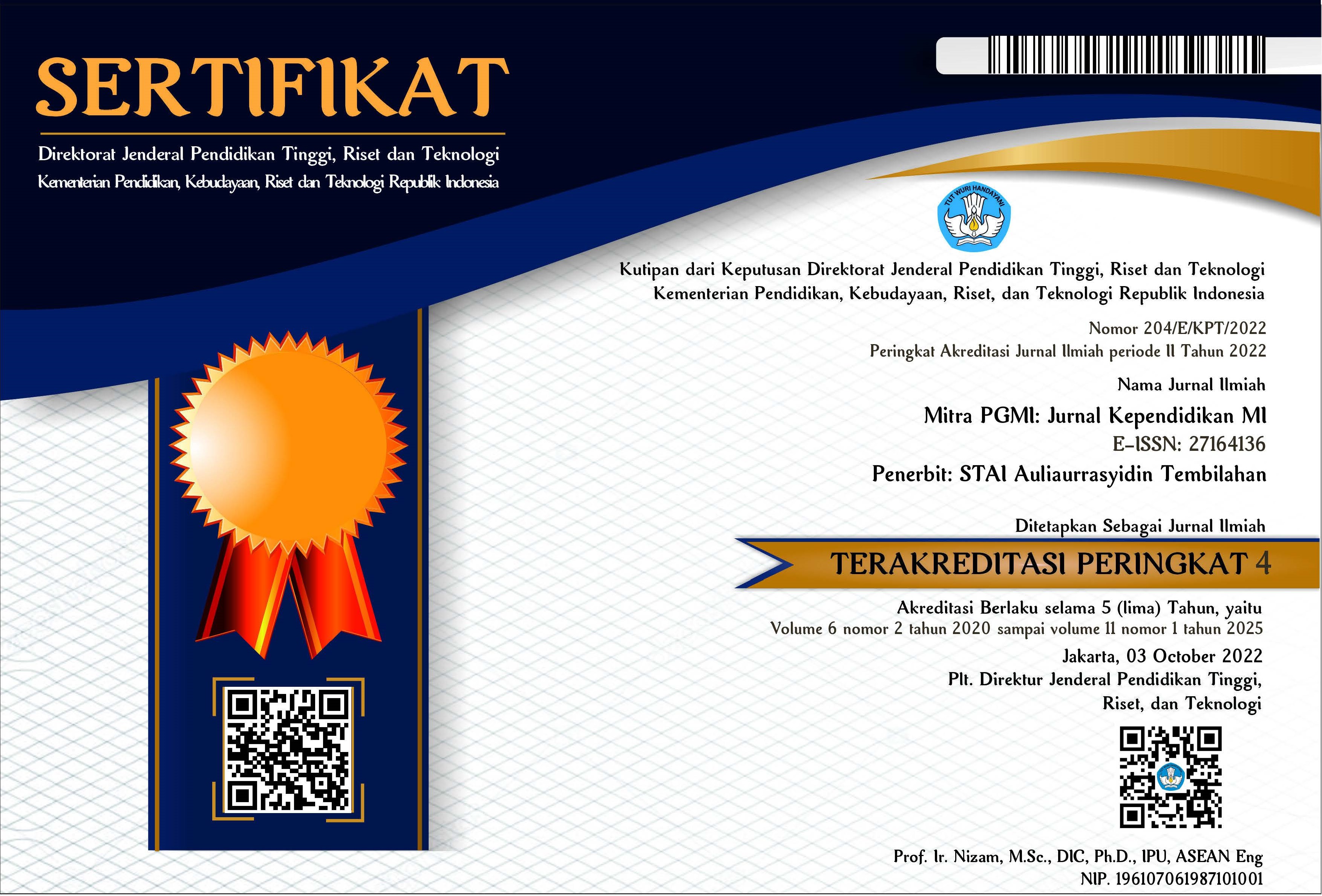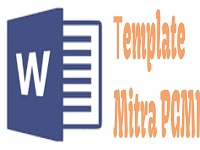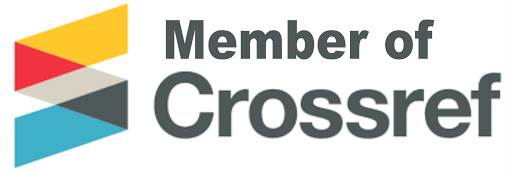Pengembangan Evaluasi Media Slide Berbasis Aplikasi Physics Education Technology (PhET) dalam Meningkatkan Eksplorasi Aktif dan Kreasi Materi Listrik
DOI:
https://doi.org/10.46963/mpgmi.v10i1.1516Keywords:
Innovative, Science, Electricity, Education DevelopmentAbstract
The aim of this research is to enhance students' understanding in the subject of Science and develop their practical skills. The study assesses the role of educators in designing and effectively delivering this integrated curriculum, emphasizing the importance of an interdisciplinary approach. Furthermore, the research evaluates the curriculum's impact on students' learning outcomes and their engagement in the subjects of Science and electrical installations. The Research and Development (RnD) method, specifically field research, was employed, utilizing literature sources from books and journals. Data collection involved interviewing 28 students as the sample. Validation analysis indicates that the learning media is highly rated by teachers for content suitability, presentation quality, user-friendliness, alignment with objectives, and teaching effectiveness, with scores ranging from 9.1/10 to 9.6/10. Students also provided positive assessments, albeit slightly lower, with average scores ranging from 8.4/10 to 8.9/10. Overall, the learning media is considered valid and effective in enhancing understanding of electrical installation materials. Practicality assessments regarding validity show that teachers and students rated the learning media highly in all aspects, indicating high consistency in media quality. Despite minor differences in opinions between teachers and students, both generally acknowledge the quality of the learning media.
Downloads
References
Anisa, V. M., & Astriani, D. (2022). Implementation of PhET simulation with discovery learning model to improve understanding of dynamic electricity concepts. Jurnal PIJAR MIPA.
Arini, Y. (2020). Blog or slide? Using Appropriate Media to Enhance the Students’ Ability in Writing an English Research Proposal based on Their Reasoning Level. Jurnal Iqra", 12-15.
Arofah, E. F. (2021). Evaluasi Kurikulum Pendidikan. Jurnal Tawadhu, 218-229.
Asrul, & Saragih, A. H. (2022). Evaluasi Pembelajaran . Medan: Perdana Publishing .
Auliah, R. (2017). Pengaruh Penggunaan Power Point Sebagai Alat Bantu Media Pembelajaran Terhadap Hasil Belajar Siswa Pada Pembelajaran IPA Kelas III SD Negeri 48 Bonto Kapetta Kabupaten Maros. Makassar: Rizky Auliah,…(2017)…Pengaruh Penggunaan Power Point Sebagai Alat Bantu Media Pembelajaran Terhadap Hasil Belajar SiUniversitas Muhammadiyah Makassar.
Badriyah, B., Setiyo, R. D., Firdausi, Z. E., Nuqia, K., Mahardika, I. K., & Baktiarso, S. (2023). Manfaat PhET Simulasi Dalam Menopang Sarana dan Prasarana Laboratorium Fisika Untuk Meningkatkan Minat Belajar Siswa. Jurnal Ilmiah Wahana Pendidikan, 84-90.
Bahtiar, Ibrahim, & Maimun. (2022). Analysis of Students' Scientific Literacy Skill in terms of Gender Using Science Teaching Materials Discovery Model Assisted by PhET Simulation. Jurnal Pendidikan IPA Indonesia, 371-386.
Darma, H. S., & Suparwoto, S. (2022). Pengembangan Media Powerpoint Terintegrasi Phet Untuk Meningkatkan Kemampuan Representasi Grafik Dan Representasi Matematis Peserta Didik. Jurnal Pendidikan Fisika, 29-40.
Febrianto, R., & Puspitaningsih, F. (2020). PENGEMBANGAN BUKU AJAR EVALUASI PEMBELAJARAN. Education Journal, 1-18.
Ida, P. (2021). Strategi Penguatan Pemahaman Pembelajaran Jarak Jauh Pada Materi Listrik DC Melalui Percobaan Berbantu Lab Virtual Phet Aplication Program dan Media Sosial Telegram. Jurnal Pendidikan Indonesia, 569-588.
Kamil. (2018). Perbedaan Hasil Belajar Siswa Pada Materi Sistem Pencernaan Pada Manusia Dengan Menggunakan Media Power Point Dan Media Torso. Bioedusiana, 38.
Maghfiroh, S., & Suryana, D. (2021). Media Pembelajaran untuk Anak Usia Dini di Pendidikan Anak Usia Dini. Jurnal Pendidikan Tambusai, 1560-1566.
Mulder, W. R., Khoiri, N., & Hayat, M. S. (2023). Validitas media pembelajaran IPA berbasis web dengan pendekatan STEAM untuk meningkatkan kemampuan berpikir kreatif peserta didik. Jurnal Praktisi Pendidikan, 11-17.
Octaviana, & setiyawan. (2019). Meningkatkan minat belajar kelas IV sekolah dasar menggunakan media powerpoint berdasarkan kerangka kerja TPACK. Octaviana, S, & Setiawan, Y (2019). Meningkatkan minat belajar kelas IVJurnal Pendidikan’ Tambusai, 80.
Ponto, H. (2018). Dasar Teknik Listrik. Yogyakarta: Budi Utama.
Purnama, S. J., & Pramudiani, P. (2021). Pengembangan Media Pembelajaran Interaktif Berbasis Google Slide pada Materi Pecahan Sederhana di Sekolah Dasar. JUrnal Basicedu, 1683-3000.
Rahayu, S. (2021). Media Interaktif IPA. Parepare: Guepedia.
Rahmawati, F., & Atmojo, I. R. (2021). Analisis Media Digital Video Pembelajaran Abad 21 Menggunakan Aplikasi Canva Pada Pembelajaran IPA. Jurnal Basicedu, 5001-6500.
Rohmah, Hariyono, & Sudarmiatin. (2017). Rohmah,…D.N.,…Hariyono: dan Sudarmiatin. 2017. Pengembangan Buku Ajar IPS SD Berbasis Kontekstual. Jurnal Pendidikan, 719-723.
Sadiman, Arief, Rahardjo, Haryono, A., & Rahardjito. (2011). Media Pendidikan :Pengertian, Pengembangan, Dan Pemanfaatannya (cetakan keenam). Jakarta: Raja Grafindo Persada.
Sukmanasa, E., Novita, L., Sundari, F. S., & Suryanti, Y. (2020). Power Point Slide Media In 2013 Curriculum Learning For Elementary School Students. Journal Of Community Engagement, 19-24.
Tegeh, Jampel, & Pudjawan. (2015). Pengembangan Buku AjarModel Penelitian Pengembangan dengan Model ADDIE. Senari, 208-216.
Usman, M. K. (2020). Analisis Intensitas Cahaya Terhadap Energi Listrik Yang Dihasilkan Panel Surya. Jurnal Orang Elektro, 52-58.
Wardani, M. A., Faiz, A., & Yuningsih, D. (2021). Pengembangan Media Interaktif Berbasis E-Book Melalui Pendekatan SAVI Pada Pembelajaran IPA Kelas IV Sekolah Dasar. Jurnal Riset Pedagogik, 230-239.
Zainuri, A., & Saepuloh. (2022). Evaluasi Manajemen Media Pembelajaran Pada Madrasah Ibtidaiyah. Jurnal Manajemen Pendidikan Islam, 255-263.
Downloads
Published
Issue
Section
License
Copyright (c) 2024 Aulia Syahrina, Yovita Yovita, Fauzan Azima Syafiuddin

This work is licensed under a Creative Commons Attribution-ShareAlike 4.0 International License.
Authors who publish with this journal agree to the following terms:
1. Copyright on any article is retained by the author(s).
2. The author grants the journal, right of first publication with the work simultaneously licensed under a Creative Commons Attribution shareAlike 4.0 International License that allows others to share the work with an acknowledgment of the work’s authorship and initial publication in this journal.
3. Authors are able to enter into separate, additional contractual arrangements for the non-exclusive distribution of the journal’s published version of the work (e.g., post it to an institutional repository or publish it in a book), with an acknowledgment of its initial publication in this journal.
4. Authors are permitted and encouraged to post their work online (e.g., in institutional repositories or on their website) prior to and during the submission process, as it can lead to productive exchanges, as well as earlier and greater citation of published work.
5. The article and any associated published material is distributed under the Creative Commons Attribution-ShareAlike 4.0 International License








2.png)


